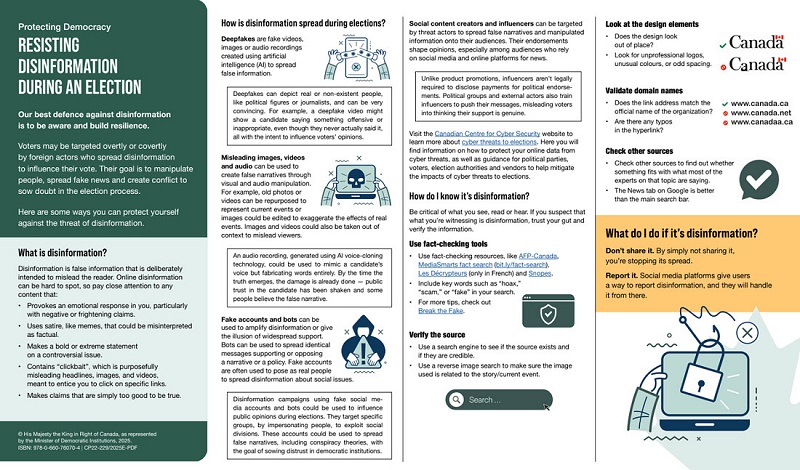Alberta
Have your say on provincial and federal firearms policy

From Alberta Government:
Albertans can now speak up about provincial firearms policy and the federal government’s “gun grab.”
Albertans are encouraged to share their opinions through an online survey and through two telephone town hall events being held on Nov. 17 and 23. Information on participating in these activities is available through the Alberta Firearms Advisory Committee website. Each town hall will be able to accommodate 1,000 people and will be filled on a first-come, first-served basis.
“The Government of Alberta is committed to protecting public safety and ensuring law-abiding firearms owners are respected. Recent legislation announced by the federal government would punish hard-working farmers, hunters and other lawful gun owners, while failing to address the true problem: the flow of illegal firearms throughout Canada from south of the border. Albertans must be heard, and these consultations will help Alberta’s government develop a responsible firearms-use policy that deters criminals without attacking law-abiding gun owners – and in turn free up the courts for serious matters.”
Kaycee Madu, Minister of Justice and Solicitor General
The Alberta Firearms Advisory Committee, chaired by Brooks-Medicine Hat MLA Michaela Glasgo, is examining the impact of the federal ban of more than 1,500 firearms. In light of this ban, the committee will consider how provincial firearms policies can best meet the needs of law-abiding Albertans. This work will support responsible gun owners, as will the establishment of a provincial firearms office and the appointment of a chief provincial firearms officer (CPFO).
An implementation team has been set up to oversee the transition to the provincial firearms office, and this winter they will begin a process to identify a suitable CPFO. The Chief Provincial Firearms Office will be operational next summer.
“This engagement will help the committee develop recommendations on how the province of Alberta can better assert itself in areas of provincial jurisdiction. Alberta’s long history of responsible firearms ownership by law-abiding citizens deserves respect; so do Albertans’ property rights. The committee will also make recommendations on how a Chief Provincial Firearms Officer can strengthen the administration of the firearms program to improve services for gun owners.”
MLA for Brooks-Medicine Hat Michaela Glasgo, chair of the Alberta Firearms Advisory Committee.
“I encourage gun owners across Alberta to make their voices heard because we are stronger together. I also commend the provincial government’s decision to set up a Chief Provincial Firearms Office and appoint a Chief Provincial Firearms Officer. This is a great way to support the hundreds of thousands of law-abiding firearms owners in Alberta. Safe use of our firearms is ingrained in Alberta’s culture – it is part of who we are.”
David Schoenberg, north central zone director of the International Practical Shooting Confederation, Alberta
Quick Facts
- On May 1, 2020, the federal government prohibited buying, using and selling thousands of firearms.
- The federal Canadian Firearms Program is responsible for the administration of the Firearms Actand regulations, and works closely with partners and stakeholders to promote firearms safety.
- The program’s latest report highlights the following:
- 3,427 firearms were seized by public service agencies in Alberta during 2018. Nationally, 25,430 were seized.
- Across Canada, between 2014 and 2018, 84,576 firearms registrations were refused or revoked.
- There are 316,791 licensed firearms owners in Alberta.
- At the end of December 2018, there were 218,305 firearms registered to businesses or individuals in the province
Alberta
Made in Alberta! Province makes it easier to support local products with Buy Local program

Show your Alberta side. Buy Local. |
When the going gets tough, Albertans stick together. That’s why Alberta’s government is launching a new campaign to benefit hard-working Albertans.
Global uncertainty is threatening the livelihoods of hard-working Alberta farmers, ranchers, processors and their families. The ‘Buy Local’ campaign, recently launched by Alberta’s government, encourages consumers to eat, drink and buy local to show our unified support for the province’s agriculture and food industry.
The government’s ‘Buy Local’ campaign encourages consumers to buy products from Alberta’s hard-working farmers, ranchers and food processors that produce safe, nutritious food for Albertans, Canadians and the world.
“It’s time to let these hard-working Albertans know we have their back. Now, more than ever, we need to shop local and buy made-in-Alberta products. The next time you are grocery shopping or go out for dinner or a drink with your friends or family, support local to demonstrate your Alberta pride. We are pleased tariffs don’t impact the ag industry right now and will keep advocating for our ag industry.”
Alberta’s government supports consumer choice. We are providing tools to help folks easily identify Alberta- and Canadian-made foods and products. Choosing local products keeps Albertans’ hard-earned dollars in our province. Whether it is farm-fresh vegetables, potatoes, honey, craft beer, frozen food or our world-renowned beef, Alberta has an abundance of fresh foods produced right on our doorstep.
Quick facts
- This summer, Albertans can support local at more than 150 farmers’ markets across the province and meet the folks who make, bake and grow our food.
- In March 2023, the Alberta government launched the ‘Made in Alberta’ voluntary food and beverage labelling program to support local agriculture and food sectors.
- Through direct connections with processors, the program has created the momentum to continue expanding consumer awareness about the ‘Made in Alberta’ label to help shoppers quickly identify foods and beverages produced in our province.
- Made in Alberta product catalogue website
Related information
Alberta
Province to expand services provided by Alberta Sheriffs: New policing option for municipalities

Expanding municipal police service options |
Proposed amendments would help ensure Alberta’s evolving public safety needs are met while also giving municipalities more options for local policing.
As first announced with the introduction of the Public Safety Statutes Amendment Act, 2024, Alberta’s government is considering creating a new independent agency police service to assume the police-like duties currently performed by Alberta Sheriffs. If passed, Bill 49 would lay additional groundwork for the new police service.
Proposed amendments to the Police Act recognize the unique challenges faced by different communities and seek to empower local governments to adopt strategies that effectively respond to their specific safety concerns, enhancing overall public safety across the province.
If passed, Bill 49 would specify that the new agency would be a Crown corporation with an independent board of directors to oversee its day-to-day operations. The new agency would be operationally independent from the government, consistent with all police services in Alberta. Unlike the Alberta Sheriffs, officers in the new police service would be directly employed by the police service rather than by the government.
“With this bill, we are taking the necessary steps to address the unique public safety concerns in communities across Alberta. As we work towards creating an independent agency police service, we are providing an essential component of Alberta’s police framework for years to come. Our aim is for the new agency is to ensure that Albertans are safe in their communities and receive the best possible service when they need it most.”
Additional amendments would allow municipalities to select the new agency as their local police service once it becomes fully operational and the necessary standards, capacity and frameworks are in place. Alberta’s government is committed to ensuring the new agency works collaboratively with all police services to meet the province’s evolving public safety needs and improve law enforcement response times, particularly in rural communities. While the RCMP would remain the official provincial police service, municipalities would have a new option for their local policing needs.
Once established, the agency would strengthen Alberta’s existing policing model and complement the province’s current police services, which include the RCMP, Indigenous police services and municipal police. It would help fill gaps and ensure law enforcement resources are deployed efficiently across the province.
Related information
-

 Daily Caller1 day ago
Daily Caller1 day agoTrump Executive Orders ensure ‘Beautiful Clean’ Affordable Coal will continue to bolster US energy grid
-

 2025 Federal Election1 day ago
2025 Federal Election1 day agoBREAKING from THE BUREAU: Pro-Beijing Group That Pushed Erin O’Toole’s Exit Warns Chinese Canadians to “Vote Carefully”
-

 Business1 day ago
Business1 day agoChina, Mexico, Canada Flagged in $1.4 Billion Fentanyl Trade by U.S. Financial Watchdog
-

 COVID-191 day ago
COVID-191 day agoTamara Lich and Chris Barber trial update: The Longest Mischief Trial of All Time continues..
-

 2025 Federal Election2 days ago
2025 Federal Election2 days agoTucker Carlson Interviews Maxime Bernier: Trump’s Tariffs, Mass Immigration, and the Oncoming Canadian Revolution
-

 Energy1 day ago
Energy1 day agoStraits of Mackinac Tunnel for Line 5 Pipeline to get “accelerated review”: US Army Corps of Engineers
-

 2025 Federal Election1 day ago
2025 Federal Election1 day agoAllegations of ethical misconduct by the Prime Minister and Government of Canada during the current federal election campaign
-

 Business2 days ago
Business2 days agoDOGE Is Ending The ‘Eternal Life’ Of Government






